Boletus edulis clade – King Bolete
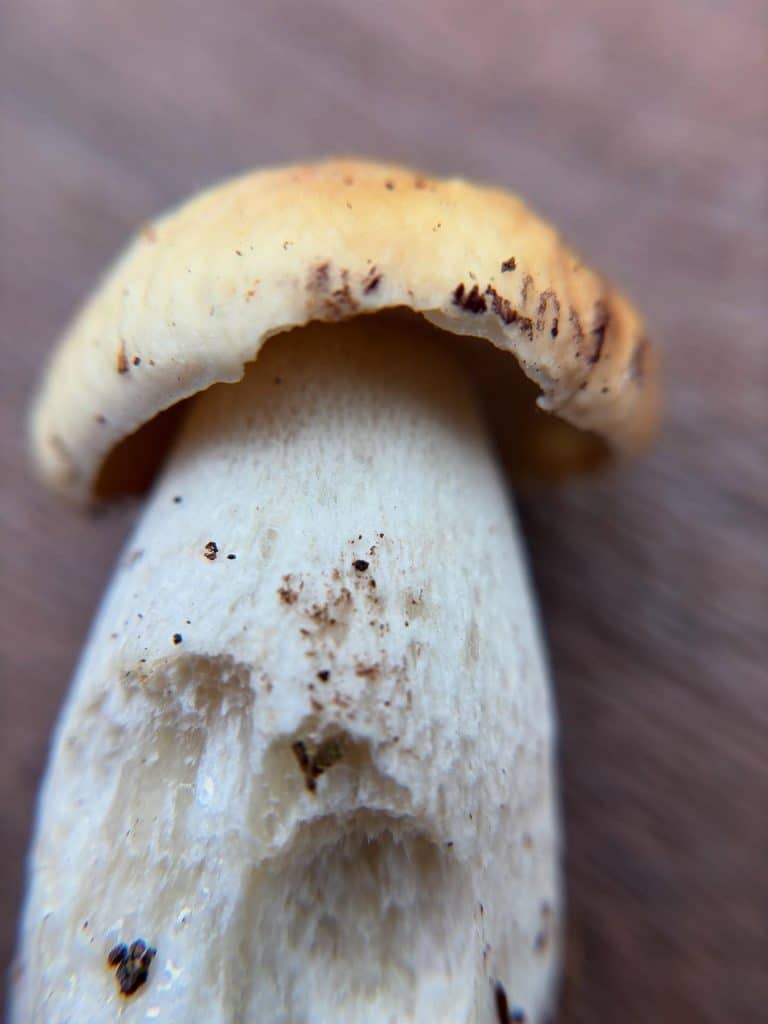
King bolete (Boletus edulis clade) is a group of mushrooms that are the most prized of the bolete mushrooms. King boletes, also known as porcini or penny bun, can grow summer-fall, 1-2 days after a heavy rain. They form mycorrhizal associations with a variety of tree species including pine, spruce, oak, and beech. King boletes […]
Amanita chrysoblema – American Fly Agaric
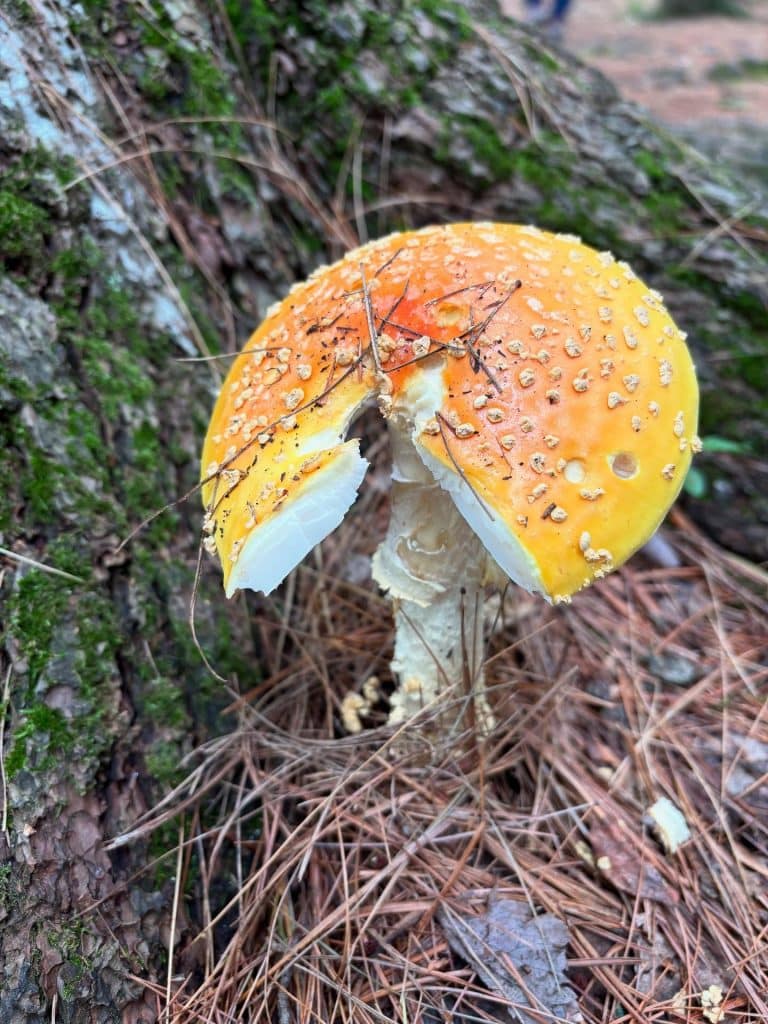
The American Fly Agaric, yellow-orange variant (Amanita chrysoblema) is toxic, psychoactive, or edible depending on preparation. It fruits often in the fall and occasionally in the spring. This species was previously called Amanita muscaria var. guessowii. The American fly agaric is often found growing mycorrhizally with conifers but can also associate with deciduous trees. […]
Suillus weaverae – Butterball Bolete

The butterball bolete (Suillus weaverae) is an edible mushroom that fruits summer-fall. It is often one of the first boletes to fruit. The mushroom has an orange-brown, slippery cap and small glandular dots on the stem. The cap may develop a patchwork pattern as it ages. The pore surface is white at first, becoming yellow […]
Lactarius tabidus – Birch Milkcap
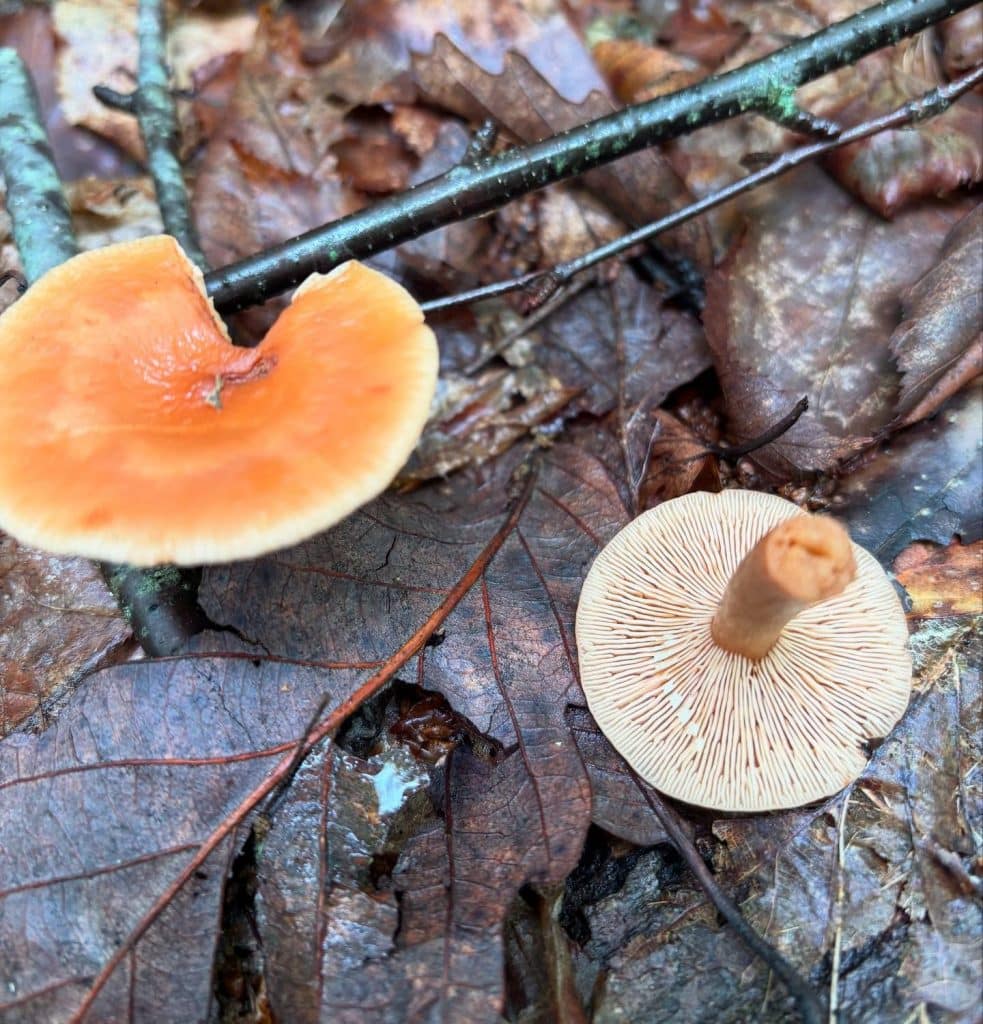
The Birch milkcap (Lactarius tabidus) is an inedible milkcap that fruits occasionally in the spring and more often in the fall next to birch trees. The birch milkcap can be identified by its orange-brown cap that is raised at its center. When the gills are damaged, they produce white latex that turns yellow. The stem […]
Pleurotus dryinus – Veiled Oyster
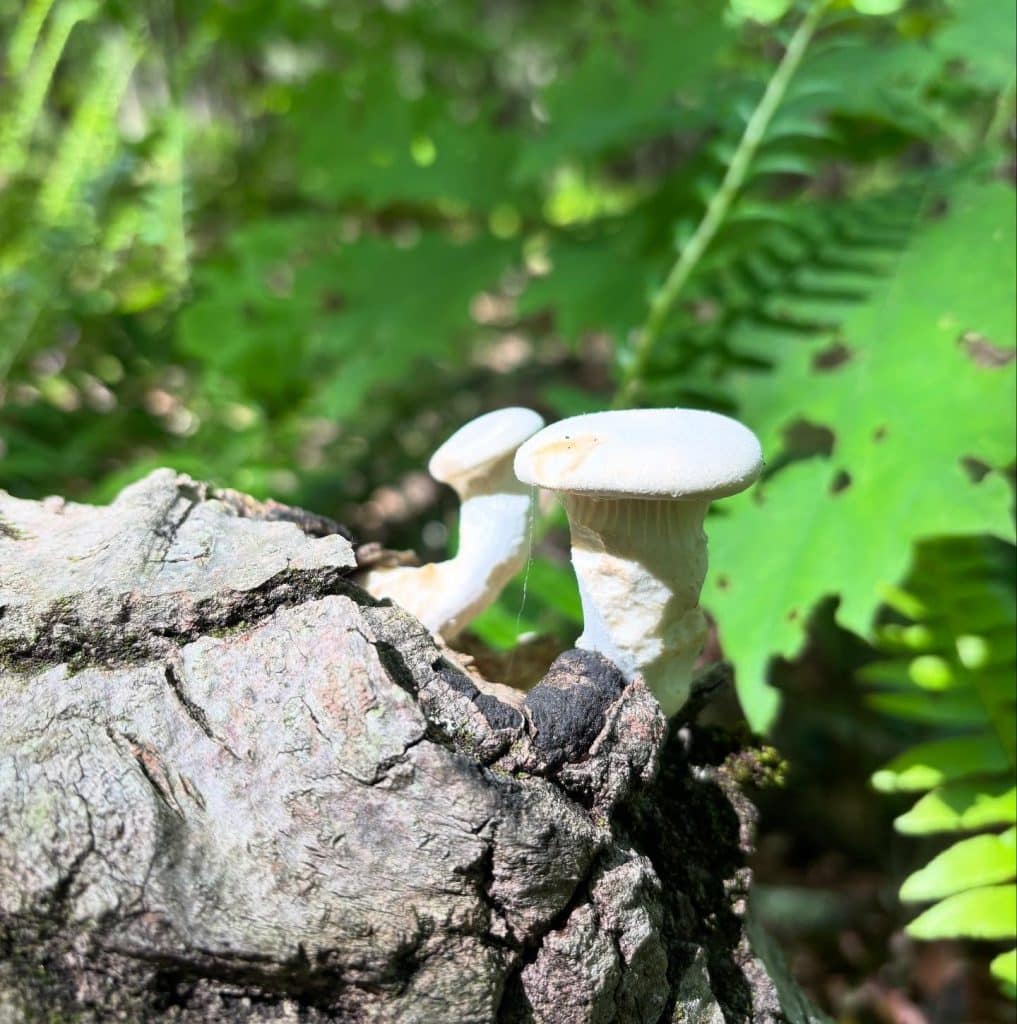
The veiled oyster (Pleurotus dryinus) is an edible oyster mushroom that can be found throughout North America. It fruits spring-fall in New England. It is most often found growing as a decomposer on dead and dying oak and beech trees but can also grow on other hardwoods. The mushroom can grow singularly or in small […]
Robinia pseudoacacia – Black Locust
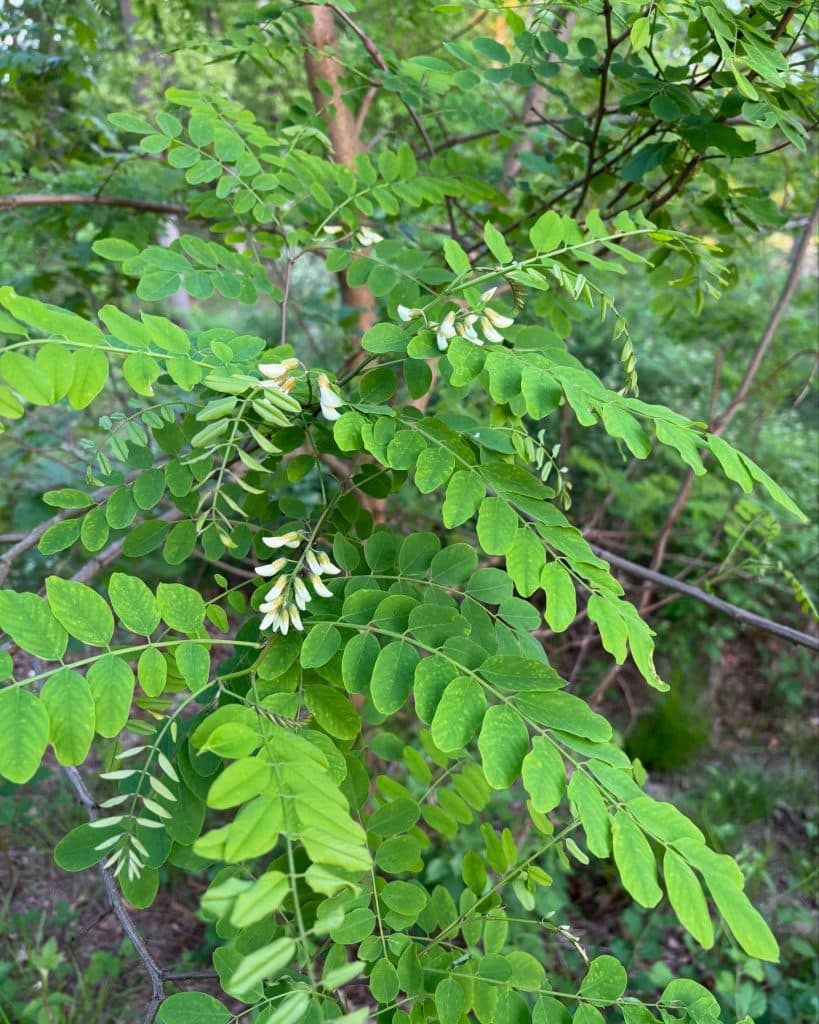
Black Locust (Robinia pseudoacacia) is an invasive tree in the legume family with edible components. Black locust trees were thought to have originated in southern Appalachian and Ozark mountains and have since spread. Black locust trees can be found in disturbed areas, roadsides, and fields. It spreads by root suckers to form clones. It […]
Melissa officinalis – Lemon Balm
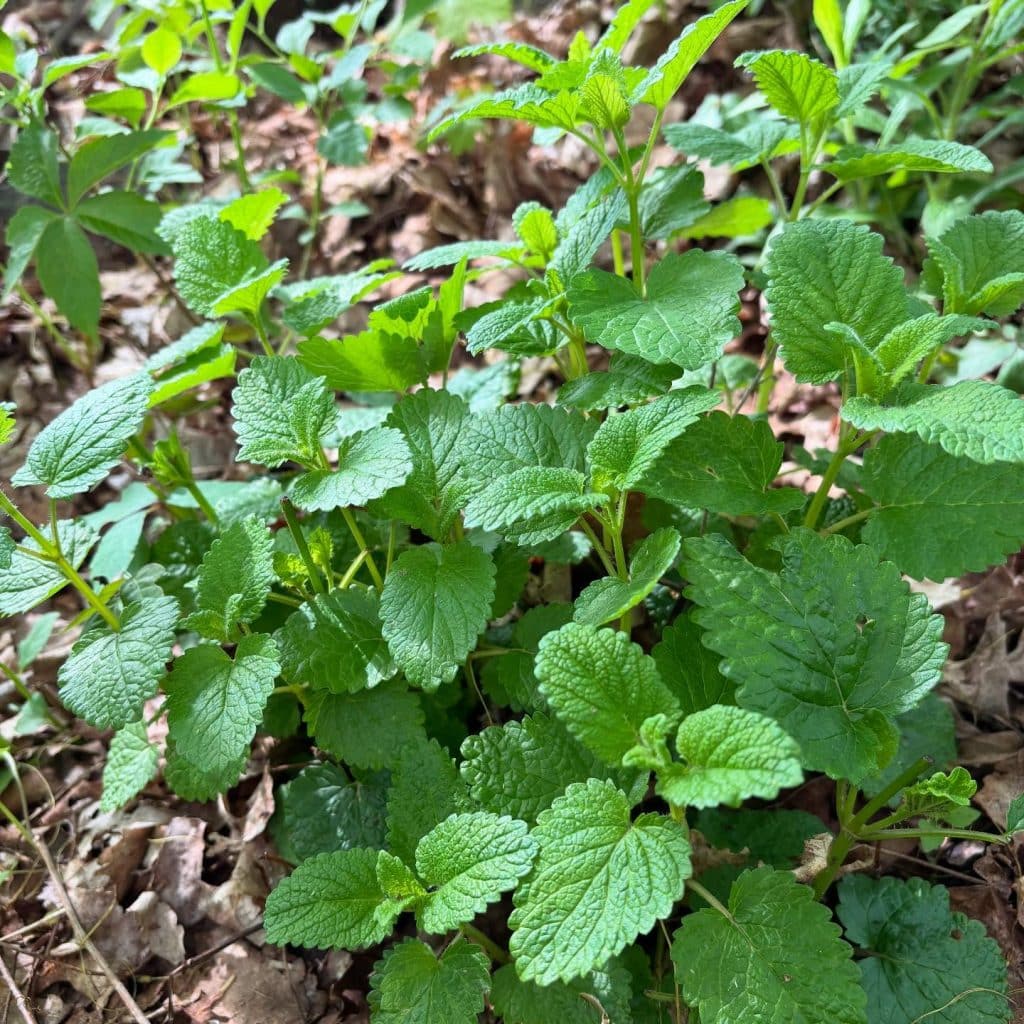
Lemon balm (Melissa officinalis) is an edible, non-native perennial in the mint family. It can be found in fields and meadows. The plant can escape cultivation and grow rapidly. Lemon balm can be identified by its square stems, opposite leaves, and lemony scent. It could be confused for other mints, but no plants in the […]
Sedum sarmentosum – Stringy stonecrop
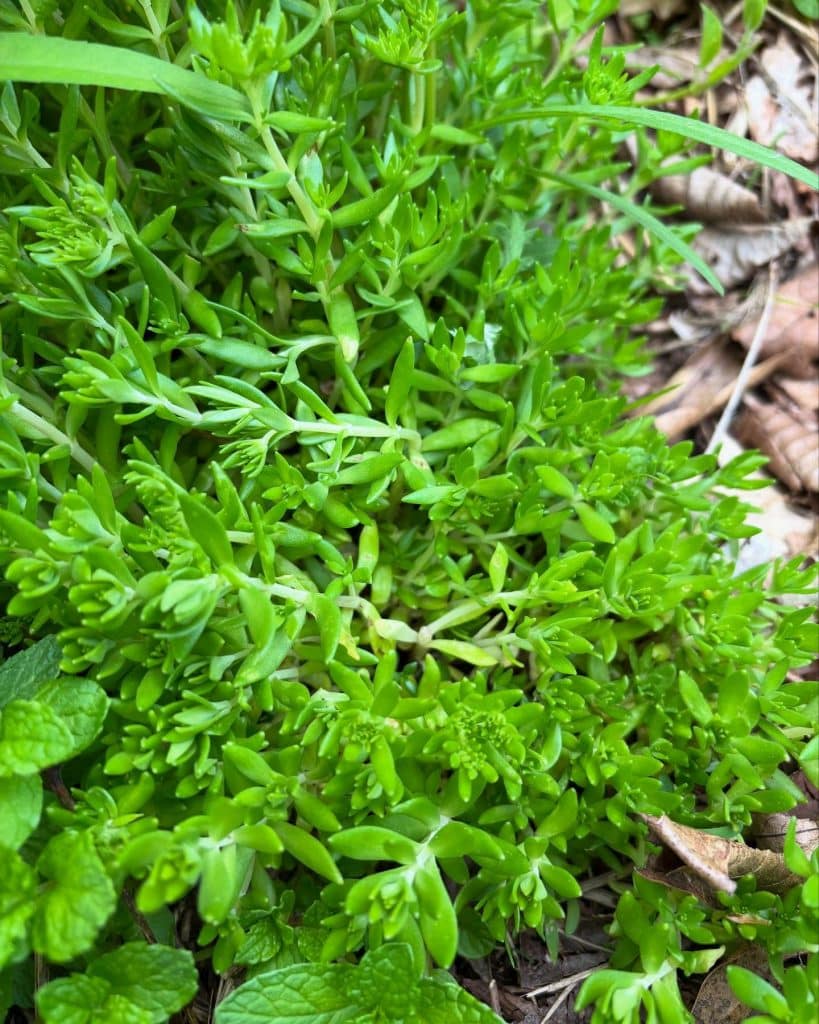
Stringy stonecrop (Sedum sarmentosum) is an introduced perennial with edible leaves. It can be found in sunny areas with sandy soil. The plant can spread quickly, forming a mat on the ground. The fleshy leaves are arranged in whorls of three. Yellow star-shaped flowers are produced in the summer. The plant is edible raw or […]
Solidago rugosa – Wrinkleleaf Goldenrod
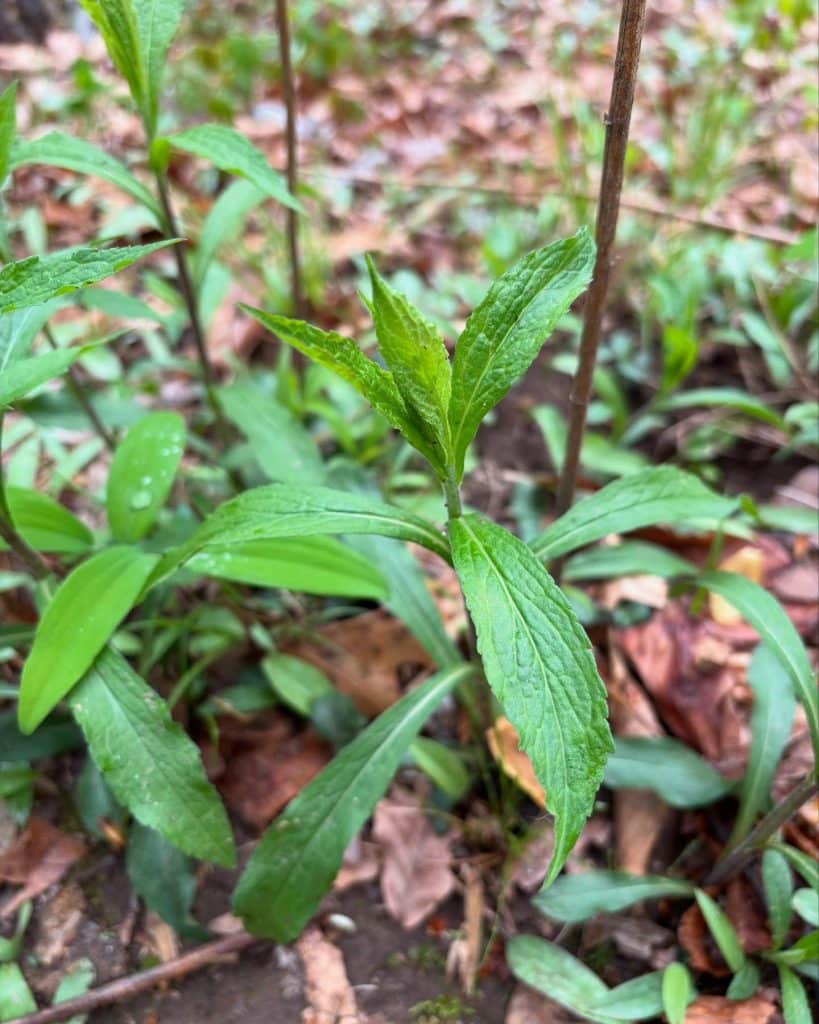
Wrinkleleaf goldenrod (Solidago rugosa) is a native perennial with edible and medicinal uses. There are over 75 species of goldenrod (Solidago spp.) in the United States. All above ground parts of goldenrods are edible, but taste varies depending on species. Goldenrods can be found in areas with well-drained soil and full sun. Wrinkleleaf goldenrod […]
Cercis canadensis – Eastern Redbud
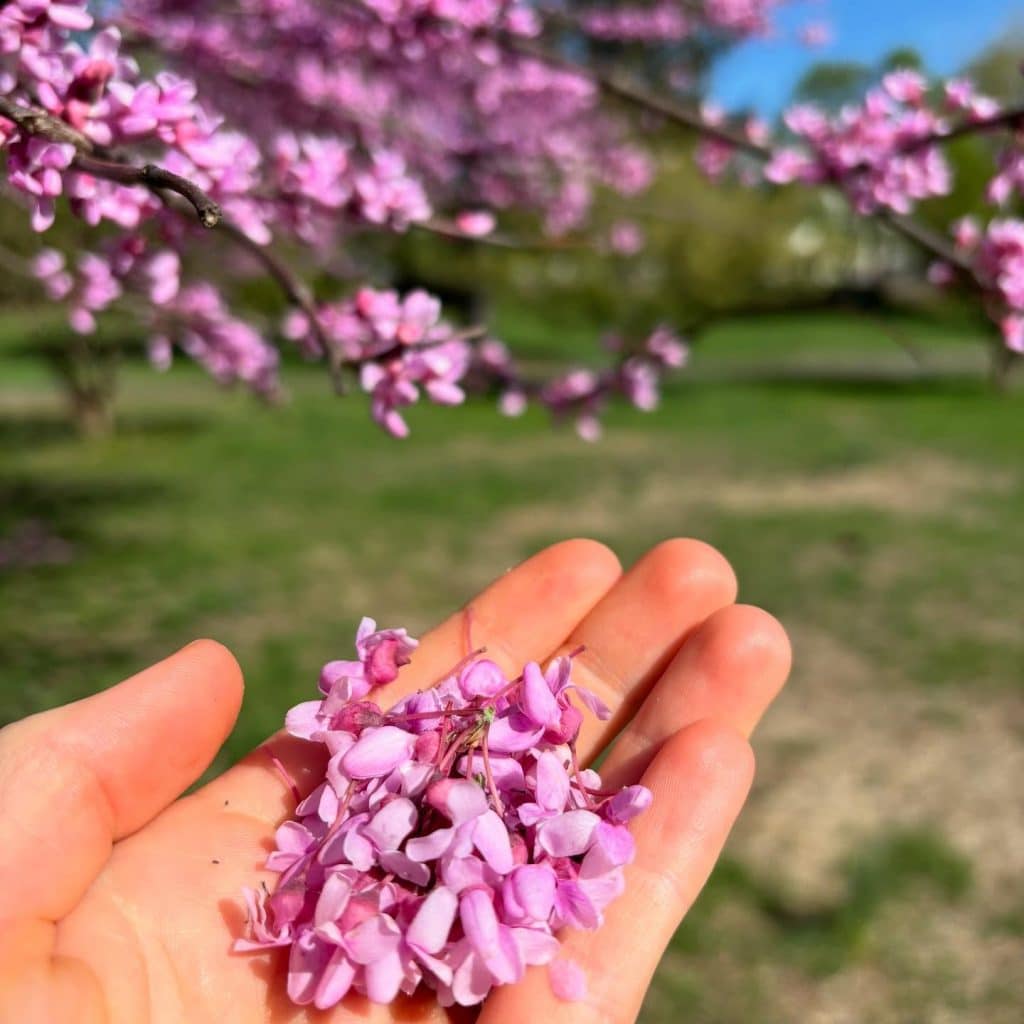
Eastern redbud (Cercis canadensis) is a tree native to southwestern CT that produces edible flowers in mid-spring. Eastern redbud can be found in mixed woodlands or cultivated areas. Pink flowers appear in spring before the leaves emerge. Leaves are alternate and heart shaped. Flowers become pods in later spring. Redbud blossoms taste like sweet peas […]
Picea glauca – White Spruce
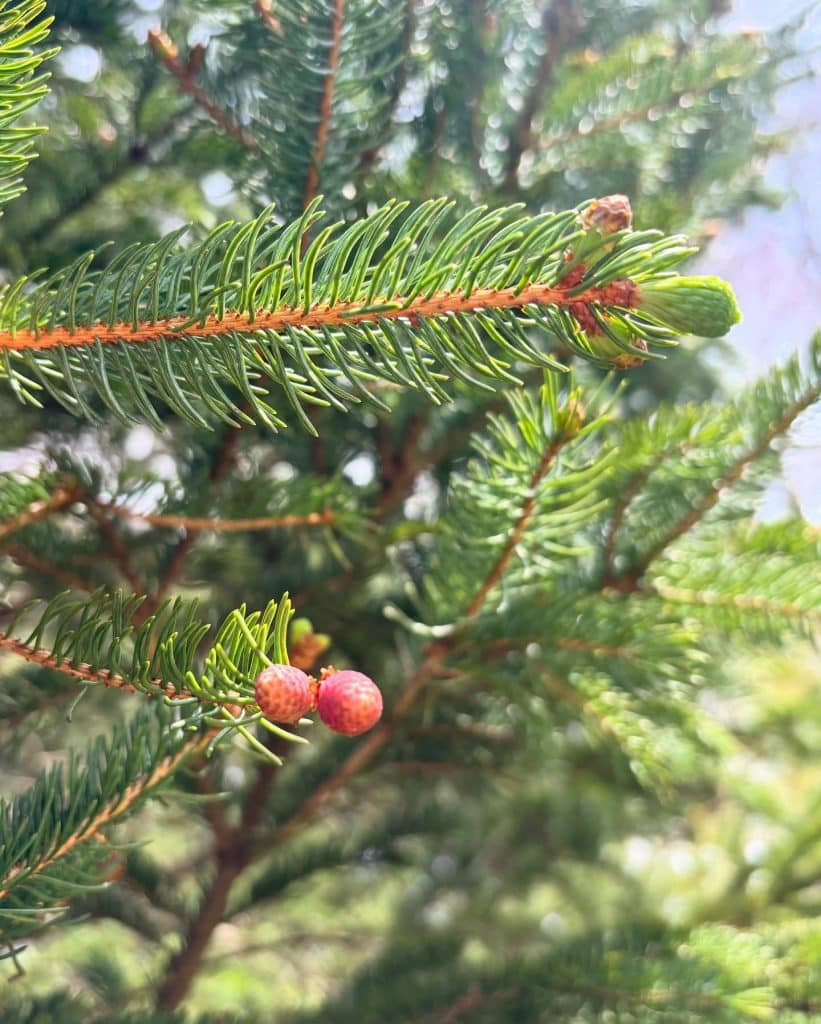
White spruce (Picea glauca) is a native evergreen that produces edible needles and cones. White spruce can be found in sunny areas with rich, well-drained soil. All spruce trees are non-toxic. Spruces are identified by their needles that are sharp and have four sides. Each needle is individually attached to the branch. Needles attach […]
Plantago rugelii – Blackseed Plantain
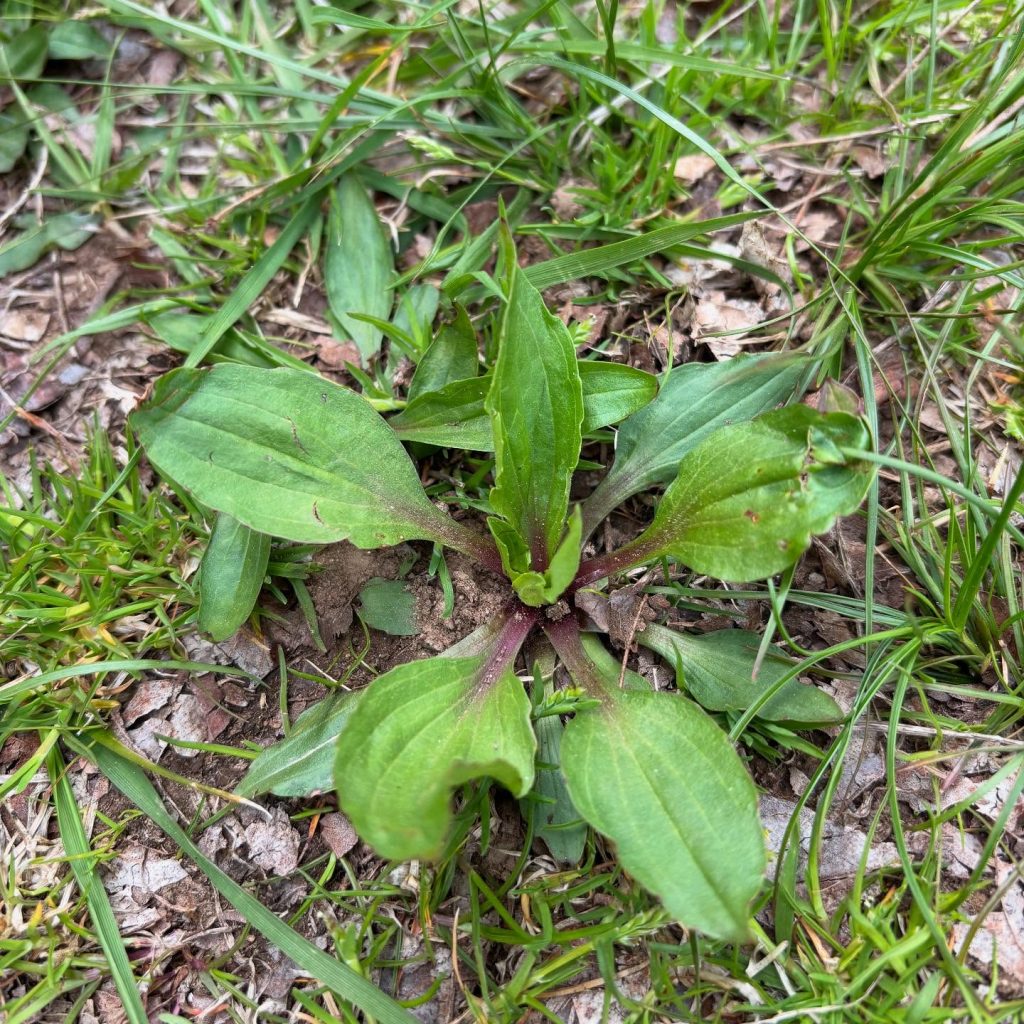
Blackseed plantain (Plantago rugelii) is a native perennial with edible and medicinal uses. Blackseed plantain can be found in areas with compacted soil such as hiking trails. Blackseed plantain can be identified by its hairless leaves with distinct veins. The petiole is often reddish. The plant produces elongated seed capsules. Young leaves can be chopped […]
Artemisia annua – Sweet wormwood
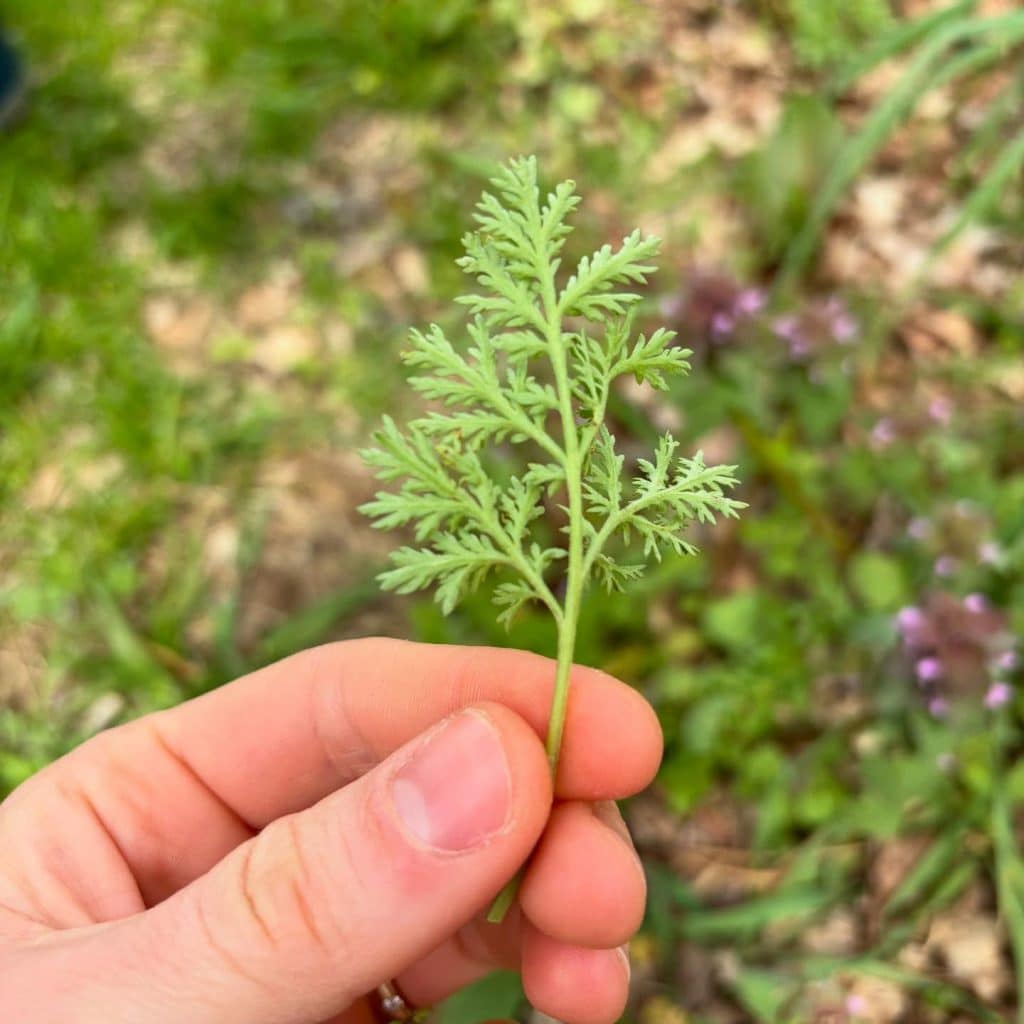
Sweet wormwood (Artemisia annua) is a medicinal annual that has naturalized in parts of North America. Sweet wormwood can be found in disturbed areas with rocky soil. The plant can be identified by its silvery-green leaves with a feathery appearance. It produces small yellow-green flowers in late summer. The leaves have a strong aromatic scent […]
Humulus lupulus – Common Hops
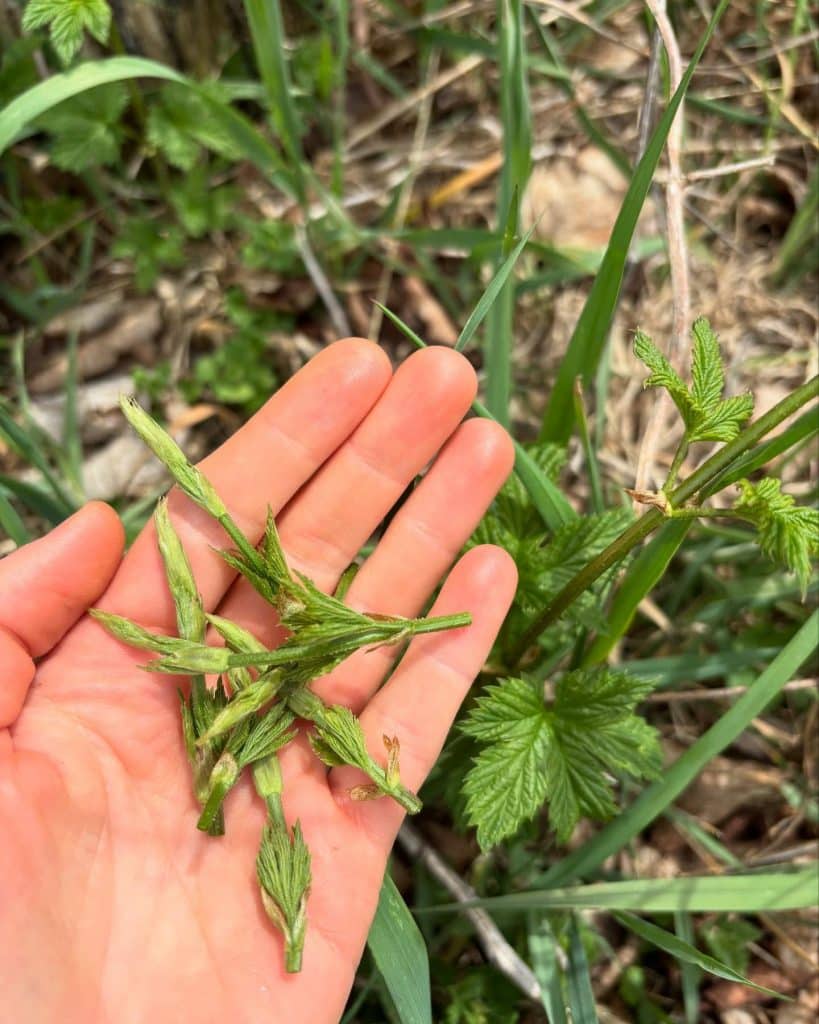
Common Hops (Humulus lupulus) are most known for their use in beer making, but they also produce edible shoots this time of year. Common hops are native to North America, but there are also varieties that are non-native. Hops can be found along forest edges, fences, and rivers. They prefer partial to full sun. Hops […]
Ulmus pumila – Siberian Elm
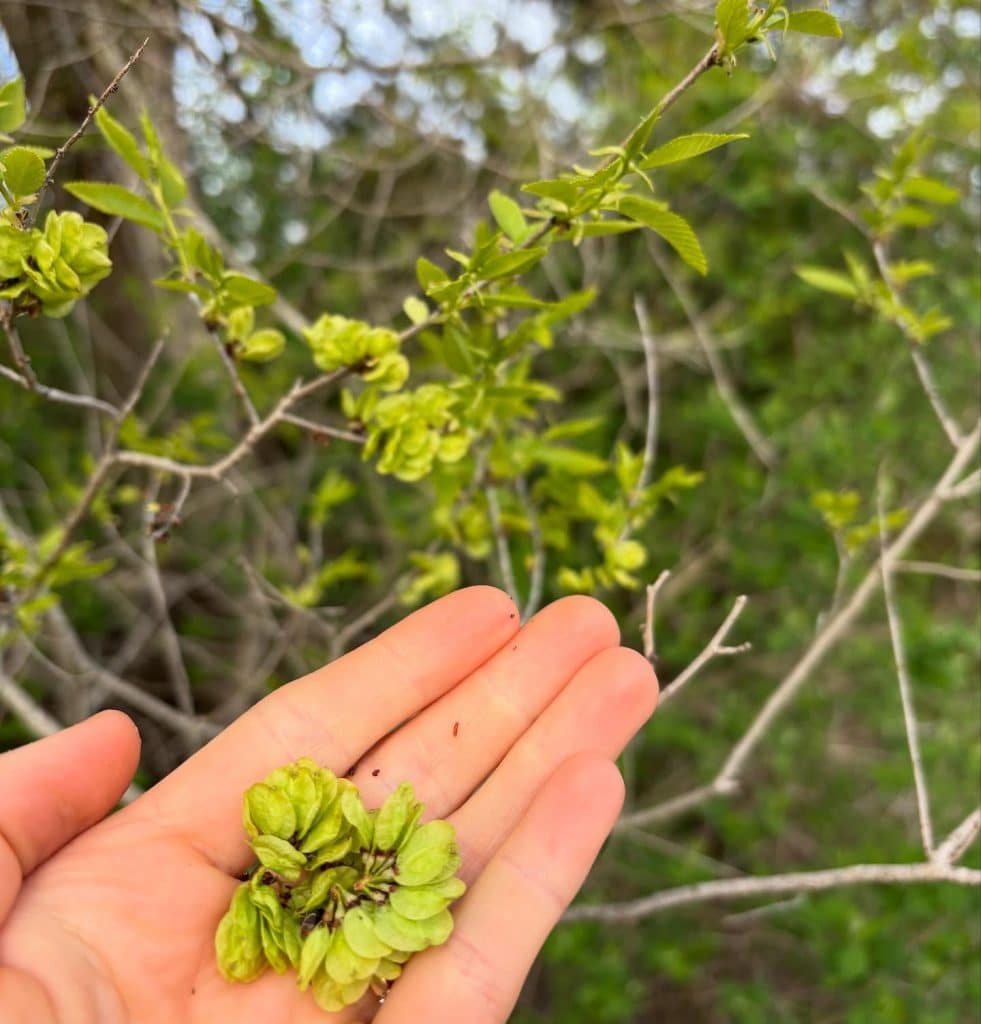
Siberian Elm (Ulmus pumila) is an invasive tree with edible samaras (seeds) that appear mid-spring. Siberian elm can be found in sunny areas such as fields and waste places. Siberian elm can be identified by its furrowed bark and alternate leaves that are elliptical in shape with toothed edges. Leaves have an uneven leaf base. […]
Caltha palustris – Marsh marigold
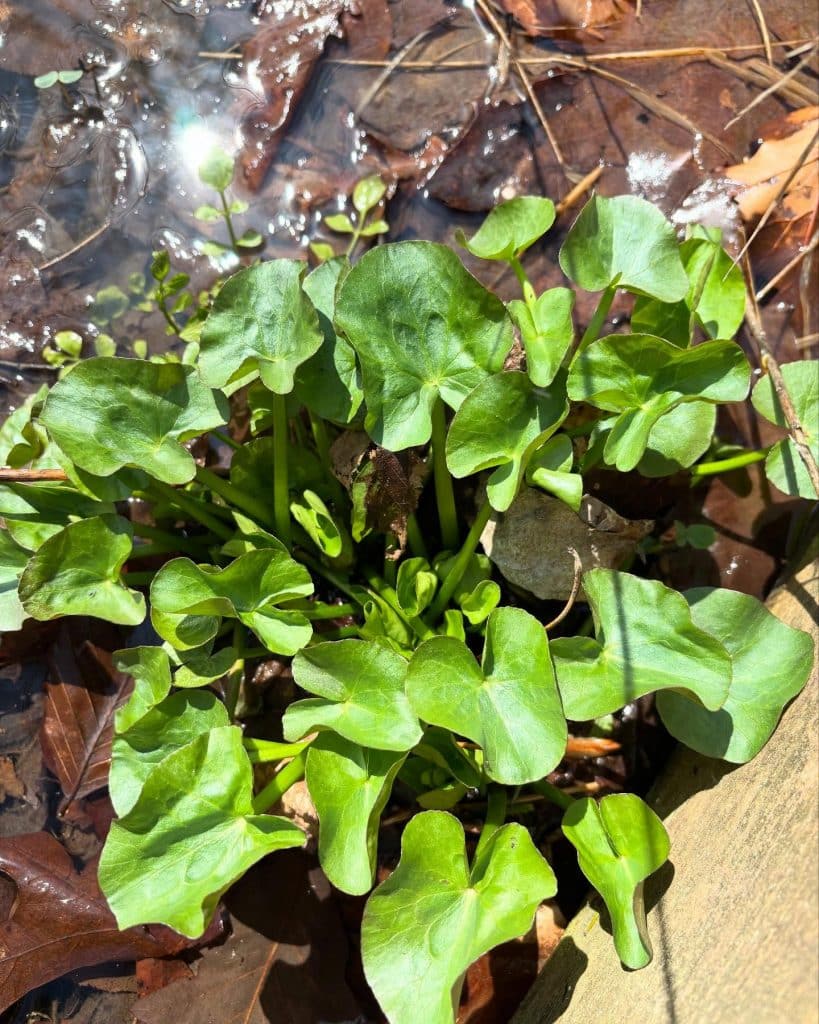
Marsh marigold (Caltha palustris) is a native perennial wildflower in the buttercup family. It can be found blooming April-May in marshy places. Marsh marigold, also known as American cowslip, has hollow stems, heart-shaped leaves, and five-petaled bright yellow flowers. The raw plant contains poisonous glucosides, which are dispelled with boiling. Leaves should be boiled in […]
Nasturtium officinale – Watercress
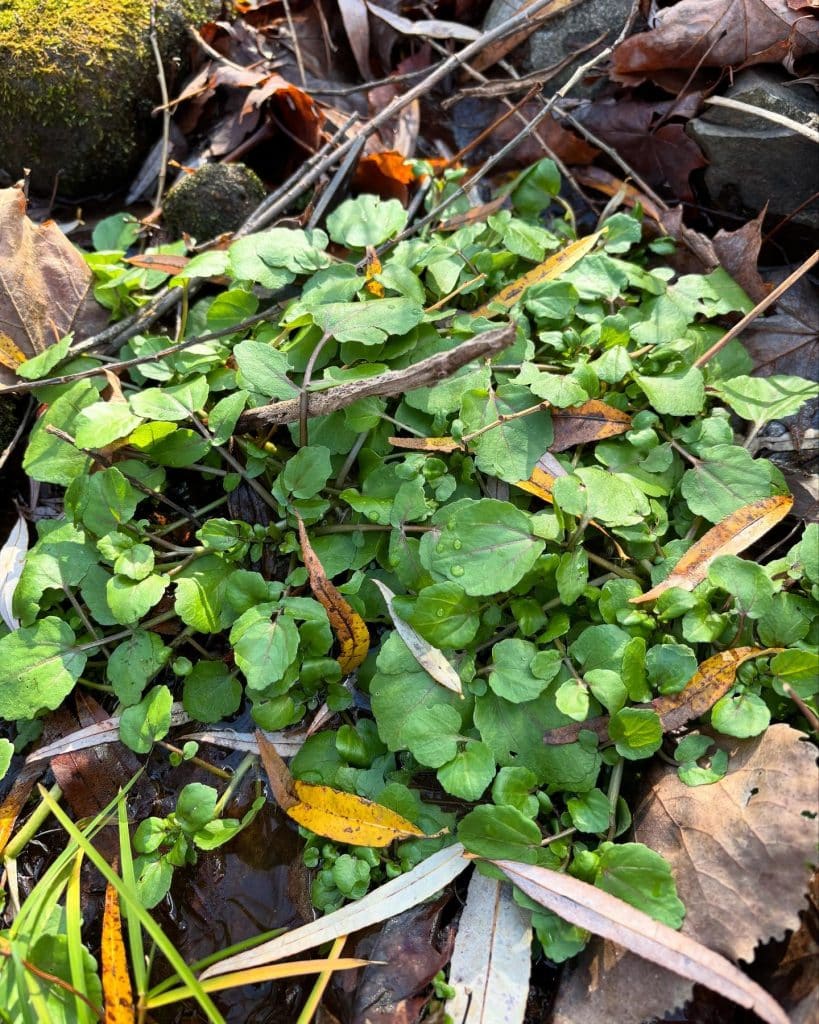
Watercress (Nasturtium officinale) is an edible perennial in the mustard family that can be found throughout the United States. It was brought over from Europe and has since become invasive. Watercress can be found in streams with water 1-6 inches deep. It is imperative to ensure the water is not polluted and the stream is […]
Symplocarpus foetidus – Skunk Cabbage
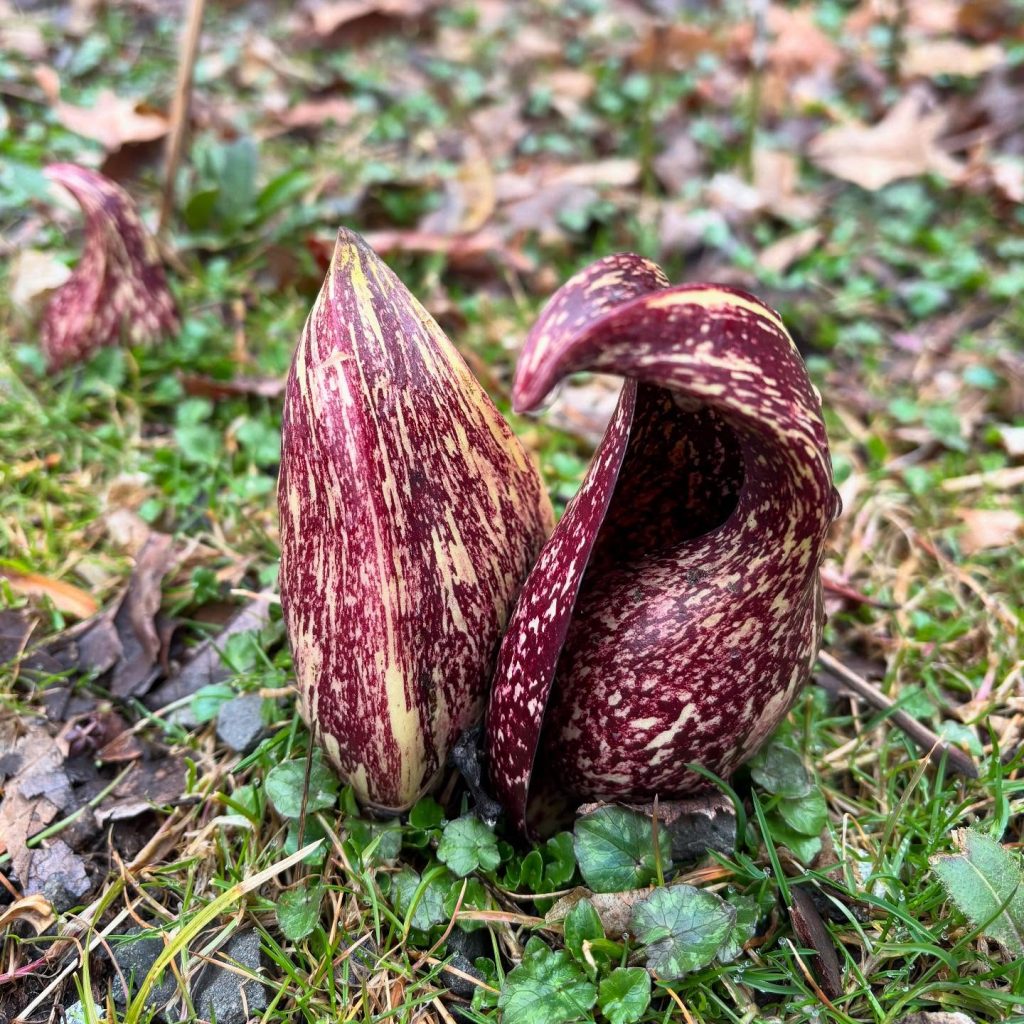
Skunk cabbage (Symplocarpus foetidus) is one of the first plants to appear in early spring. It is found in swamps and marshlands. Skunk cabbage starts off as a greenish or reddish leathery bract that holds circular flowers. Tightly coiled leaves appear in a week or two. Cutting or bruising the leaves cause a skunky smell. […]
Pinus strobus – Eastern White Pine
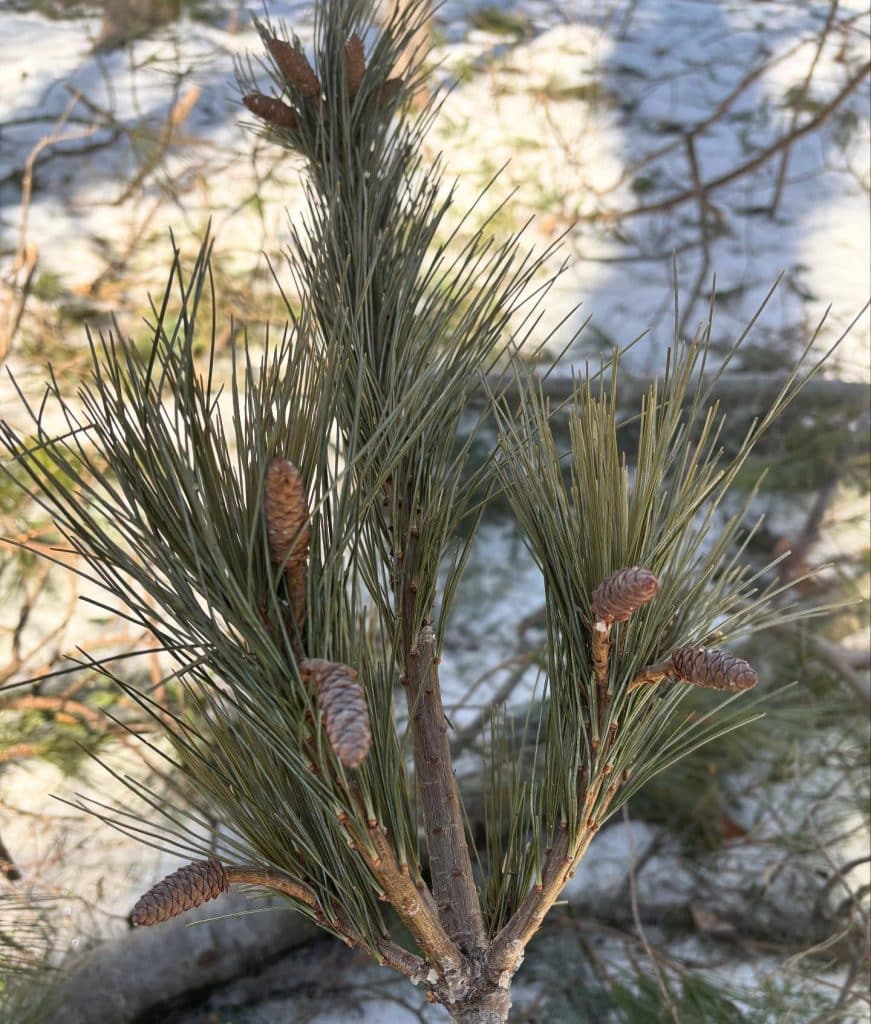
Eastern white pine (Pinus strobus) is a native tree that can be foraged year-round. The entire tree is non-toxic. Eastern white pine has needles that grow in groups of five. This is the only pine tree in Connecticut that has five needles per bundle. Needles are edible and can be used to make tea year-round. […]
Ulva spp. – Sea lettuce
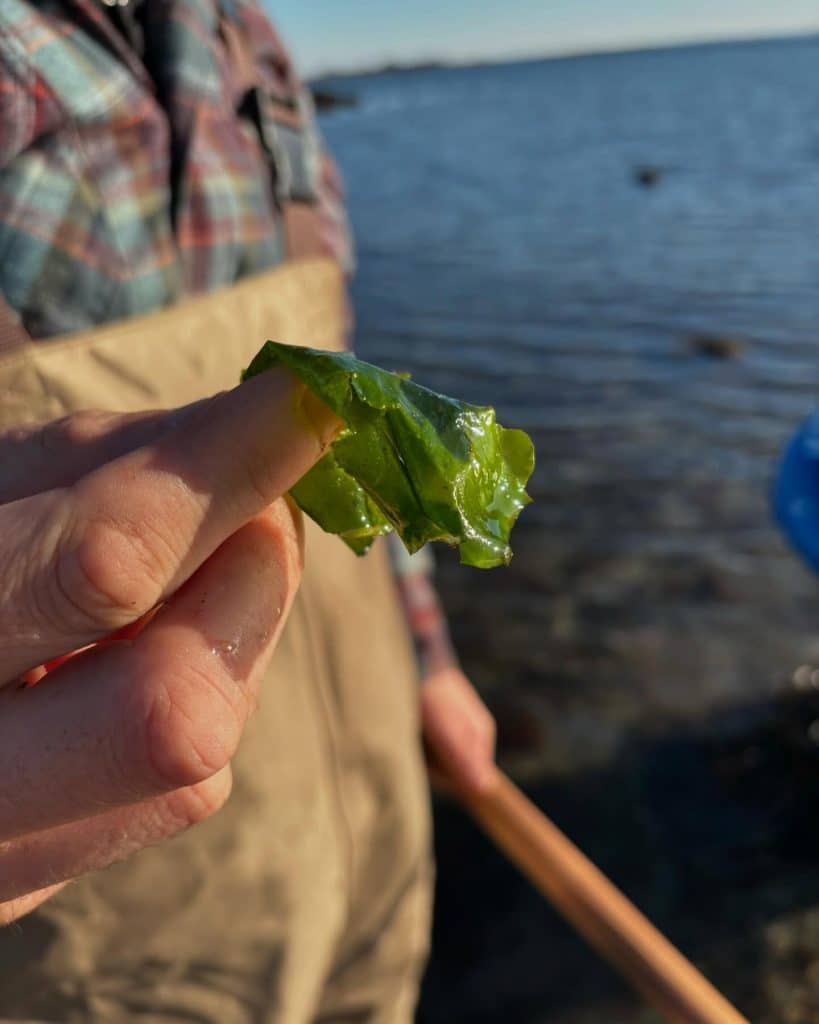
Sea lettuce (Ulva spp.) is an edible green alga that can be found in inter-tidal zones. There are both native and non-native species of sea lettuce in Connecticut that can be difficult to differentiate without a microscope. Sea lettuce produces vibrant green, translucent sheets that are two cells thick. They attach to rocks and shells. […]
